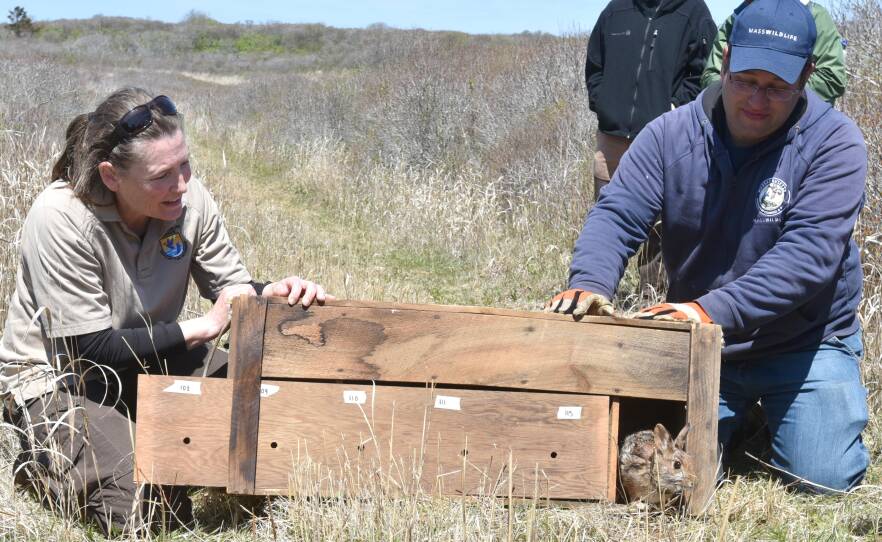Nomans Land Island, a former Navy bomb testing site just off Martha’s Vineyard, received its first rabbit inhabitants this week from the U.S. Fish and Wildlife Service. Thirteen New England cottontails, a threatened species, were brought by boat to the island to form the basis of what biologists hope will become a thriving rabbit colony.
The day of the rabbit release began at the Bristol County Agricultural High School in Dighton, where the future bunny colony of Nomans Land Island had been residing for the past two months under the care of a group of students and the watchful eye of their teacher Brian Bastarache.
The school's students had been feeding the rabbits, cleaning their cages and caring for them since they arrived in February, after being captured on Cape Cod.
"The New England cottontail is the only rabbit that’s native to New England," Bastarache said. "People often see the introduced eastern cottontail, which has slowly been replacing New England cottontails over a period of time as we’ve changed the landscape."
The New England cottontail was once common throughout Massachusetts, but now it’s found mostly on Cape Cod, and is being outcompeted by the larger eastern cottontail, a similar looking but genetically distinct rabbit. Its shrub habitats are also being depleted by human development as cities and towns clear land for lawns and buildings. Bastarache said in this way, the New England cottontail is no different from a lot of species that have been pushed out by development.
"New England cottontails are just one of the cuter ones, so it’s a good one to focus on, it’s a flagship species, a 'charismatic megavertebrate' as we say, although it’s not very mega," he said.

These 13 rabbits would be the first members of a New England cottontail colony that biologists will then use to repopulate other parts of the state.
It’s a long journey out to the island. First, there’s a truck ride, and then an hour long boat ride. The island is closed to the public because of the presence of unexploded bombs, though officials have said that the rabbits aren't in danger because they're too lightweight to detonate them. Eileen McGourty, a wildlife biologist with the Fish and Wildlife Service, is leading the effort and said that this island was chosen because it’s remote and mostly undisturbed.
"Nomans Land Island is great because there are no mammalian predators out here, and it’s also land that won’t be developed or fragmented," McGourty said. "This land will be here as it is for a long period of time."
McGourty and her team then hiked into the brush with the rabbit boxes.
"We’re looking for a really shrubby habitat for them that provides a lot of cover for them on the ground. I tried to choose an area where the shrub area is a little higher, so that’s why we’re going to be hiking up a little further," she said.
There are a total of five females and eight males that are released, each one by one. McGourty and the team will be returning again over the next few months to check on the rabbits, and each rabbit is tagged with a GPS collar to track them as they disperse across the island.
"To have the rabbits on the ground is great. It feels wonderful," McGourty said. "I like to be able to see them, but to have them out on the island is much better."
The island can support around 500 rabbits, and the team hopes that the 13 released today can reach that number in the next few years.




